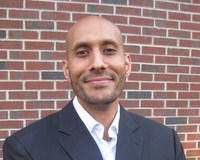I was in awe last weekend.
Tucked in a booth at IHOP, my wife, daughters and I huddled around my phone. Our weekend ritual is to relish each other’s company while enjoying stacks of pancakes and plates of eggs.
This morning, we were preoccupied.
Throughout our breakfast, I was streaming live footage from the #MarchForOurLives student-led demonstration in support of tighter gun control in the United States.
Speeches delivered by inspiring young people, many of whom have become national heroes, calling for social change.
My personal resonance with these speeches was the powerful voices emerging from young girls, such as 11-year-old Naomi Wadler.
Watching these speeches with my own young daughters, a volt of inspiration infused my limbs.
Tears welled my eyes.
Hope filled my heart.
In the gym later that afternoon, I spotted a man in his early 20s watching the live feed on his phone between reps.
Among the sea of people and placards streaming on his phone, one student demonstrator caught my eye. She held a placard that read “You can put a silencer on a gun... but not on me.”
I was curious if there were many others in the Tri-Cities who were also watching these demonstrations. Later that evening, I perused my Twitter feed and attained my confirmation. Indeed, this student march activated many others in our community.
In the Tri-Cities, we do not have a gun problem, to which we owe our gratitude to tougher gun control in Canada. What we do have is young people aplenty and they are doing extraordinary things.
Recently, I was invited to address high school students who lead a local Model United Nations chapter, an international educational simulation through which students learn diplomacy, decorum and global affairs.
Meeting some of the brightest and civically conscious SD43 students, I was taken aback by their high level of engagement in local social issues. These particular students, and many like them, are grappling with issues that matter most to them.
Today, our high school students are discussing the growing divide within their schools based on academic achievements, race and citizenship. They are debating indigenous rights and the recent verdict on the death of Tina Fontaine along with other cases surrounding missing and murdered indigenous women and girls. They are organizing initiatives to support Syrian refugee classmates to help them integrate in their new community. All this activism is initiated after school, in addition to their schoolwork.
According to a recent article in The Economist, young people from rich countries are better behaved, less prone to try illicit drugs, get into trouble or commit anti-social behaviour. Yet, the British magazine suggests the youth of today are more isolated than in the past. The article points to a recent survey showing 15-year-olds from rich countries are less likely to make friends easily. Technology is suggested to be the culprit — social media, to be exact.
But the high school students I met with, along with those I watched at the March For Our Lives demonstration, offer a counter narrative. In fact, they are very much connected to many other young passionate students. They are calling for social change. They do not want to be silenced.
After all, the #MarchForOurLives would not exist in the absence of social media.
I wonder what support or platform we as a community — private sector, community leaders and government — may provide our young people to encourage and support civic activism, particularly on local issues. In the meantime, our students are doing amazing things, inspiring awe in many of us.
Adel Gamar is a Coquitlam resident who’s a former policy fellow at Harvard Law School and current CEO of Gamar Leadership Group.
@AdelGamar



